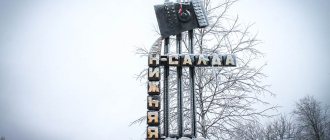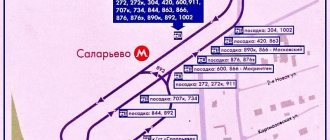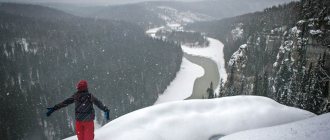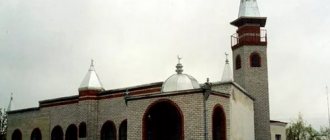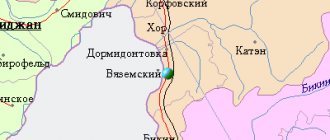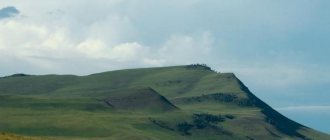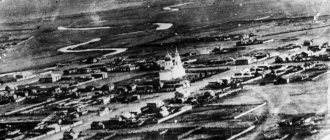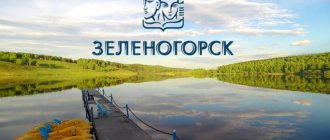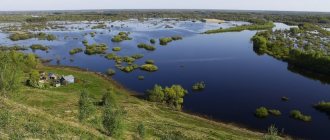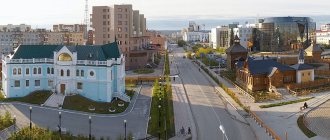The Republic of Tatarstan includes districts and cities of republican significance, the list of which is established by the Constitution of the Republic of Tatarstan (43 municipal districts). The total area of Tatarstan is 67,836 km². The length of the territory of the republic is 290 km from north to south and 460 km from west to east.
The capital of the Republic of Tatarstan, the million-plus city of Kazan, is located on the left bank of the Volga, at the confluence of the Kazanka River, in the eastern part of the European continent.
In addition to the capital, the Republic also has 21 cities, 19 urban-type settlements, as well as large rural settlements. The most populated region of Tatarstan is Zelenodolsk, the least populated is Elabuga. Tatarstan is the only region of the Russian Federation that has more than one million-plus urban agglomeration - Kazan and Naberezhnye Chelny (Nizhne-Kama).
The population of the republic is 3.86 million people, of which 76.3% are urban residents (as of 2015), population density is 56.82 people/km2.
What holiday is it today?
February 10, 2022, Thursday
Today are holidays, events: Diplomat's Day Tomorrow: World Sick Day Discovery of insulin
Today is the Orthodox holiday: St. Ephraim the Syrian. Venerable Ephraim of Novotorzhsky. Venerable Ephraim of Pechersk, Bishop of Pereyaslavl. Venerable Theodosius of Totem, Spasosumorin of the monastery, leader and founder... Tomorrow: Transfer of the relics of the holy martyr Ignatius the God-Bearer. Saints Gerasim, Pitirim, Jonah, bishops of Great Perm, Ustva...
Today is a national holiday: Ephraim's Day... Tomorrow: Lawrence's Day
Urban-type settlements of Tatarstan
| № | Settlement | Area | Population | Telephone code |
| 1 | Arsk | Arsky district | 19 681 | 84366 |
| 2 | Kukmor | Kukmorsky district | 17 479 | 84364 |
| 3 | Vasilyevo | Zelenodolsk district | 17 420 | 84371 |
| 4 | Kamskie Polyany | Nizhnekamsk district | 15 645 | 8555 |
| 5 | Jalil | Sarmanovsky district | 13 613 | 85559 |
| 6 | Alekseevskoe | Alekseevsky district | 11 615 | 84341 |
| 7 | Urussu | Yutazinsky district | 10 577 | 85510 |
| 8 | Lower Maktama | Almetyevsky district | 10 059 | 8553 |
| 9 | Aksubaevo | Aksubaevsky district | 9 984 | 84 344 |
| 10 | Aktobe | Aznakaevsky district | 9 120 | 85 511 |
| 11 | Rich Subs | Sabinsky district | 8 372 | 84362 |
| 12 | Baltasi | Baltasinsky district | 8 115 | 84368 |
| 13 | Nizhniye Vyazovye | Zelenodolsk district | 8 060 | 84371 |
| 14 | Rybnaya Sloboda | Rybno-Slobodsky district | 7 755 | 84361 |
| 15 | Apastovo | Apastovsky district | 5 306 | 84376 |
| 16 | Karabash | Bugulminsky district | 4 955 | 85514 |
| 17 | Kama Ustye | Kamsko-Ustinsky district | 4 496 | 84377 |
| 18 | Kuibyshevsky Zaton | Kamsko-Ustinsky district | 2 644 | 84377 |
| 19 | Tenishevo | Kamsko-Ustinsky district | 762 | 84377 |
Seasons
Seasons, four periods of the year (spring, summer, autumn and winter) characterized by certain average temperatures. The period during which the Sun passes through one of these sectors is called the season. Spring in the Northern Hemisphere and autumn in the Southern Hemisphere begin when the Sun passes through the initial circle of declination and its right ascension is 0° (vernal equinox). Summer in the Northern Hemisphere and winter in the Southern Hemisphere occur when the sun's right ascension is 90° (summer solstice). Autumn in the Northern Hemisphere and spring in the Southern Hemisphere begin when the sun's right ascension is 180° (autumnal equinox). The beginning of winter in the Northern Hemisphere and summer in the Southern Hemisphere is considered to be the winter solstice, when the direct ascension of the Sun is 270°... Next: Seasons. Russian folk calendar. Monthly words...
State flag of the Republic of Tatarstan
The state flag of the Republic of Tatarstan is a rectangular panel with horizontal stripes of green, white and red. The white stripe is 1/15 of the width of the flag and is located between equal width stripes of green (cobalt green light) and red (cadmium red light) colors. Green stripe at the top.
The ratio of the width of the flag to its length is 1:2.
The author of the State Flag of the Republic of Tatarstan is T.G. Khaziakhmetov.
Folk calendar about every day
Every day one season always replaces another and this determines a person’s way of life. In connection with this, a folk calendar was formed in which there were practically no nameless, unmarked days. Every day was special, had its own purpose. All this was determined by climate conditions and astrological phenomena.
A calendar is a system for counting periods of time. The first calendars arose a long time ago, in ancient times, because there was a need to measure time. The word calendar comes from the Latin words caleo - to proclaim and calendarium - debt book. This is due to the fact that in Ancient Rome the beginning of each month was especially proclaimed, and because it was customary to pay debts on the first day of the month. Different peoples counted time differently. Some calendars are based on the changing phases of the moon - lunar calendars; in others - the change of seasons - sunny; in others, the length of the year was coordinated with the change of seasons, and the counting of months was associated with the phases of the Moon. Such calendars are called lunisolar.
In Rus', the calendar was called a monthly calendar. Every day, the month book covered the entire year of peasant life, “describing” day by day, month after month, where each day had its own holidays or weekdays, customs and superstitions, traditions and rituals, natural signs and phenomena. The cyclical nature of the calendar is reminiscent of human life, where spring is youth, summer is heyday, autumn is the time of harvesting fruits (it’s good if there are some, otherwise you can live your life without collecting fruits), winter is the time of wisdom and peace. This cyclicality and rhythm determined the way of life of the farmer. The folk calendar was an agricultural calendar, which was reflected in the names of the months, folk signs, rituals and customs. Even the determination of the timing and duration of the seasons is associated with real climatic conditions. Hence the discrepancy between the names of the months in different areas... Next: Folk calendar...
Fishing calendar for every day
The fishing calendar should not be taken as an absolutely indisputable truth. Fish biting is greatly influenced by a whole range of natural factors, as well as the influence on the nature of man himself. You must not forget that the fish’s bite depends and is determined not only by the calendar dates and biological cycles of their life, reflected in the calendar, but also, no less, by the state of their habitat; the bite also depends on weather conditions: air and water temperatures, cloudiness, wind direction and strength, etc... Next: Fishing calendar...
Geography of the Republic of Tatarstan
The Lower Kama National Park and the Volzhsko-Kama Nature Reserve are located on the territory of Tatarstan. The Volzhsko-Kama Nature Reserve is located in the Kama region, on the left bank terraces of the Volga, on the territory of the Zelenodolsk and Laishevsky districts of the Republic of Tatarstan. Two separate sections of the reserve - Saralovsky (4170 hectares) and Raifsky (5921 hectares) are 100 km apart from each other.
The Lower Kama National Park is located on the territory of two administrative districts of the Republic of Tatarstan: Yelabuga and Tukaevsky. Several land and water tourist routes through forests are planned within the park, as well as water routes along the water area of the reservoir, along the Kama and Kriusha rivers.
Orthodox calendar about every day
Orthodox calendar: Orthodox, Church and Christian holidays.
The church year is an alternation of weekdays and holidays. On weekdays, a person is called to work “by the sweat of his brow to earn his bread.” Holidays are given in order to feel liberation, to rise above the bustle and routine of the world, to feel involved in the highest of worlds, “where there are no illnesses, sorrows and sighs, but endless life.” Since ancient times, holiday cycles have been associated with the seasons. The pagans associated them with the worship of the forces of nature, the cult of which in the Old Testament was replaced by gratitude to the Creator for the universe. And although the connection between holidays and the seasons has not completely lost its power, since God is present in everything, in the plant and animal world, in human works, it nevertheless faded into the background, giving way to a spiritual foundation built on the Sacred Scriptures. The history of Orthodox holidays dates back to the times of the Old Testament. Each of the Orthodox holidays is dedicated to the remembrance of the most important events in the life of Jesus Christ and the Mother of God, as well as the memory of saints... Next: Orthodox calendar...
Russian folk calendar for every day
The word “sign” comes from the word “notice”, i.e. observe. As a result of observing what happens around a person every day, he accumulates life experience. This knowledge was passed down from generation to generation, carefully preserved and people trusted it as a sacred book. Many signs have come to us from the depths of centuries without losing their knowledge. Each of us is free to choose: to dismiss all this as an absurd superstition or to take a closer look at the signs and take the centuries-old experience of generations more seriously. Most of us, when taking exams, ask them to scold them, boasting about some kind of good fortune or luck, spit so as not to jinx them or knock on wood, take a detour if a black cat crossed the road, are afraid of the number 13 and much more. And who among us does not have lucky things, numbers? Who has never resorted to the help of fate at least once in their life, who has not believed in secrets? It’s as if everything connected with signs is hidden somewhere deep in our subconscious. Often we remember them mechanically, unconsciously, or just as a joke. But, undoubtedly, the signs contain a lot of accurate knowledge and practical wisdom of our ancestors. They cover all the characteristic, often difficult to perceive, natural phenomena. Signs have preserved a lot of what was in old folk holidays and customs; they help predict the weather, grow crops... Next: Folk signs...
Holiday calendar, dates and events of the year
All state and professional holidays in Russia, including significant World and International holidays, and other equally interesting holidays and events about every day.
The holiday has always kept pace with the history of mankind. Social time can be divided into three types: everyday life (weekdays), weekends and holidays. Everyday life is a series of practices repeated day after day and every day (work). Weekends are regular breaks from the rush of everyday life. It is believed that on weekends a person should restore his strength after working days. Day off, non-working day. A holiday is a day of celebration established in honor or in memory of someone or something. A day or series of days celebrated by the church in memory of a religious event or saint... Next: Calendar...
State emblem of the Republic of Tatarstan
The state emblem of the Republic of Tatarstan is an image of a winged leopard with a round shield on its side, with a raised right front paw against the background of a disk of the sun, placed in a frame of Tatar folk ornament, at the base of which is the inscription “Tatarstan”, the wings consist of seven feathers, a rosette on the shield consists of eight petals.
In the color image of the State Emblem of the Republic of Tatarstan, the sun is red (cadmium red light), the leopard, its wings and rosette on the shield are white, the frame is green (cobalt green light), the shield, the ornament on the frame and the inscription “Tatarstan” are golden.
The authors of the State Emblem of the Republic of Tatarstan are N.G. Khanzafarov (idea), R.Z. Fakhrutdinov (performance).
Prayer book, Orthodox prayers for every day
Prayer is the most powerful means for healing all illnesses - both physical and mental. Prayers can be laudatory or grateful, petitionary and repentant. If we have offended God, sinned, we must ask Him for forgiveness, that is, repent. Such prayers are called repentant prayers. If everything is fine with us, if we and our loved ones are healthy and prosperous, if we have a place to live, something to wear, something to eat, we must glorify and thank God for this. Such prayers are called praise or thanksgiving. If some misfortune, illness, trouble or need happens, you need to ask God for help. Such prayers are called petitionary... Next: Orthodox prayers...
Zodiac, astrological, eastern calendar. Zodiac signs
In ancient times, to establish the calendar, priests used knowledge of the positions of all the planets. Before the reform of Peter 1, the New Year was celebrated on the Day of the Autumn Equinox. On this day, according to ancient legend, the most peaceful treaty was concluded between the Great Race (ancient Slavs) and the Great Dragon (ancient Chinese) and it was approximately 7518 years ago... For the ancient Slavs, the calendar month corresponded to the lunar cycle from new moon to new moon, taking into account such Thus, the relationship of the entire annual cycle with astronomical and natural phenomena. There was no coherent calendar system. The main natural phenomena are still considered to this day to be the days of the solar equinox and solstice - the Slavic holidays Maslenitsa, Kupala, Ovsen and Kolyada. But during the time of Peter 1, all ancient Slavic calendars were abolished and a new Western European calendar from the Nativity of Christ (Julian calendar) was introduced, while the beginning of the calendar was moved to January 1. The Julian calendar (old style) did not take leap days into account and accumulated one extra day every 128 years. After the October Revolution in 1918, the Gregorian calendar (new style) was introduced in Russia, according to which an amendment of 13 days was introduced. The calendar of the ancient Slavs was based on two planets: the Sun and the Moon. And now they don’t use anything at all. The calendar has become static. There is no such thing as the calendar, it turns out, resting on some planet. Nobody even knows about it. There are just some standard numbers, there are months and holidays. The calendar is based on the Sun and Moon. Why is this so? Because these two luminaries influence the Earth. The Earth revolves around the Sun, and the Moon revolves around the Earth. And these two luminaries create the atmosphere on the planet. From here the calendar is built... Next: Astrological calendar...
Cities of Tatarstan
| № | City | Area | Population | Telephone code |
| 1 | Kazan | Urban district | 1 205 651 | 843 |
| 2 | Naberezhnye Chelny | Urban district | 524 444 | 8552 |
| 3 | Nizhnekamsk | Nizhnekamsk district | 235 448 | 8555 |
| 4 | Almetyevsk | Almetyevsky district | 151 157 | 8553 |
| 5 | Zelenodolsk | Zelenodolsk district | 98 462 | 84371 |
| 6 | Bugulma | Bugulminsky district | 86 747 | 85514 |
| 7 | Elabuga | Elabuga district | 72 929 | 85557 |
| 8 | Leninogorsk | Leninogorsk district | 63 635 | 85515 |
| 9 | Chistopol | Chistopolsky district | 61 110 | 84342 |
| 10 | Zainsk | Zainsky district | 41 046 | 85558 |
| 11 | Aznakaevo | Aznakaevsky district | 34 720 | 85511 |
| 12 | Nurlat | Nurlatsky district | 33 102 | 84345 |
| 13 | Mendeleevsk | Mendeleevsky district | 22 200 | 85549 |
| 14 | Bavly | Bavlinsky district | 22 114 | 85519 |
| 15 | Buinsk | Buinsky district | 20 854 | 84374 |
| 16 | Agryz | Agryz district | 19 738 | 85551 |
| 17 | Menzelinsk | Menzelinsky district | 16 952 | 85555 |
| 18 | Mamadysh | Mamadyshsky district | 15 528 | 85563 |
| 19 | Tetyushi | Tetyushsky district | 11 449 | 84373 |
| 20 | Bulgarian | Spassky district district | 85 42 | 84347 |
| 21 | Laishevo | Laishevsky district | 82 28 | 84378 |
| 22 | Innopolis | Zelenodolsk district | 10 | 84371 |
Dream books online, interpretation of dreams
A dream book is nothing more than an interpreter of dreams and dreams, a translator of dreams. Since ancient times, people have been using dream books; dreams have always been given great importance, and people have often noticed the prophetic properties of some dreams. The dream book can become your faithful assistant every day and throughout your life, thanks to the dream interpreter you can always make the right decisions, the dream book will help you resist temptations in time, and will warn you against wrong steps and frivolous actions. Further…
